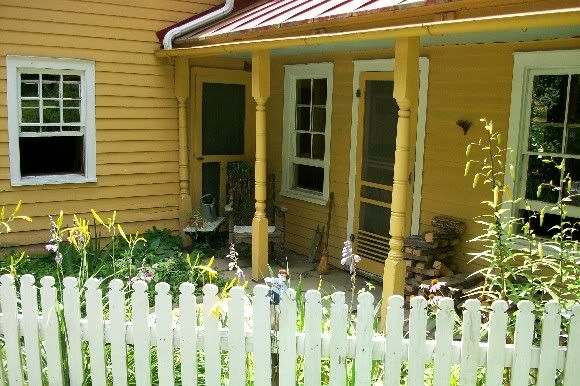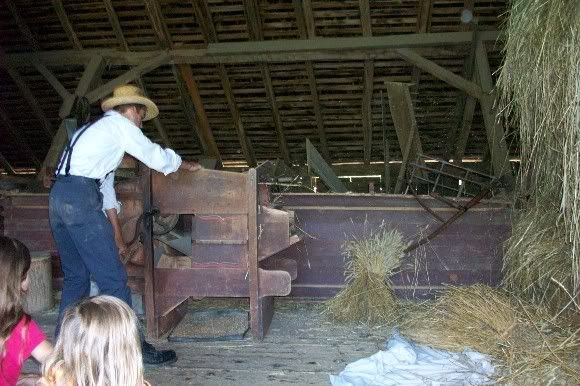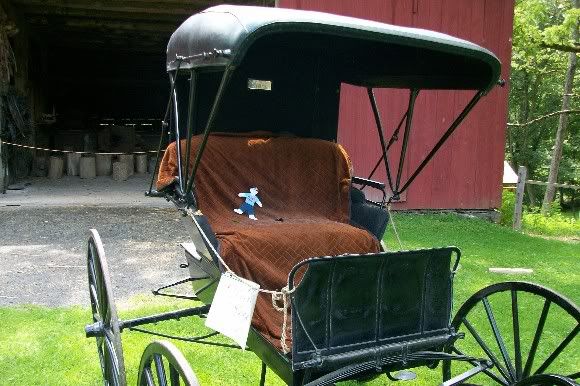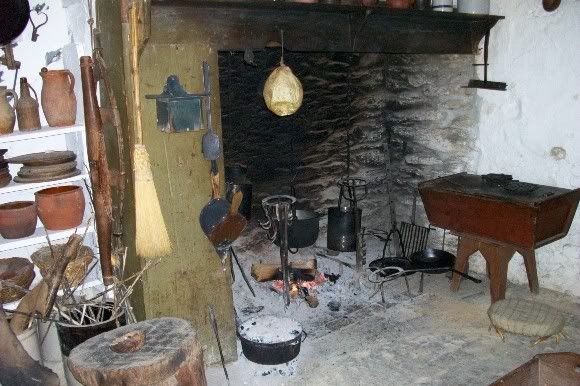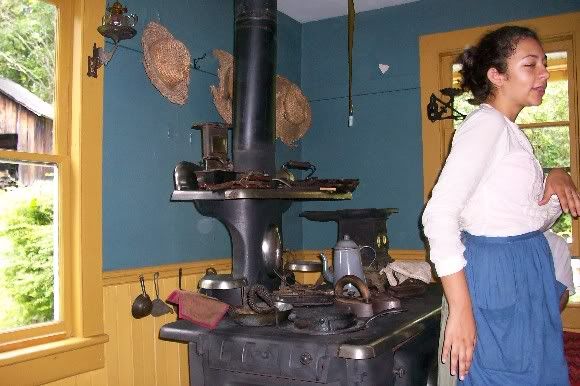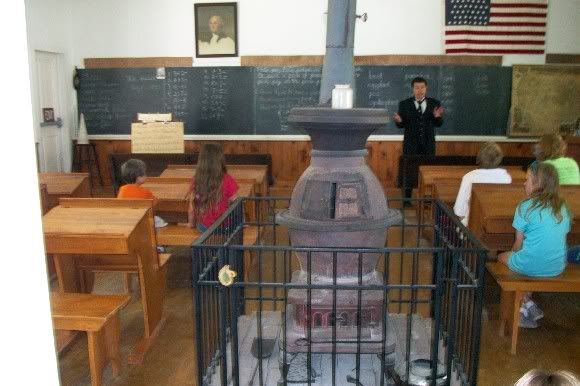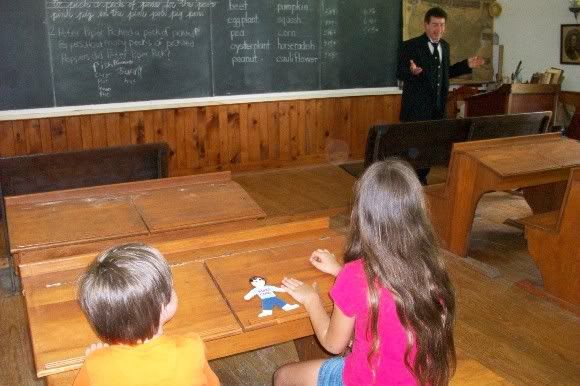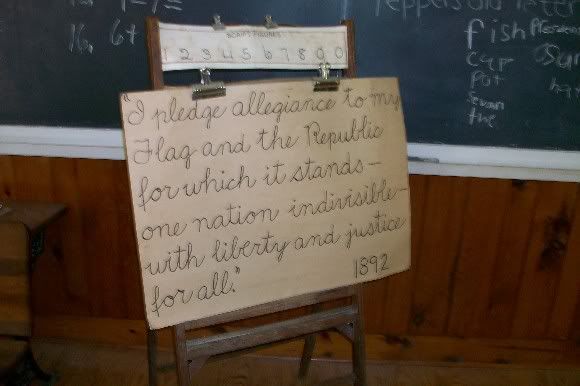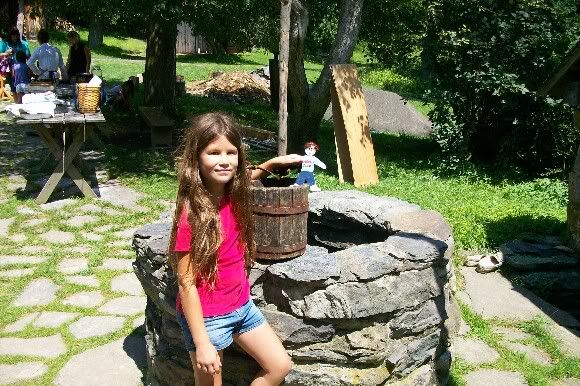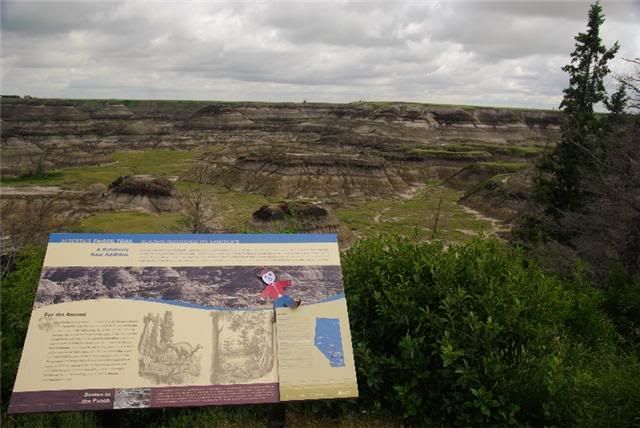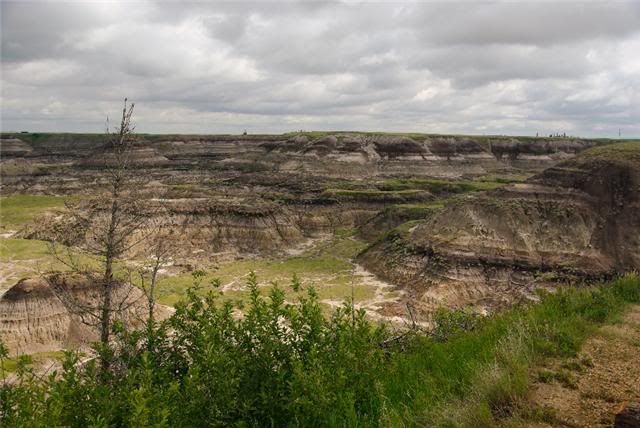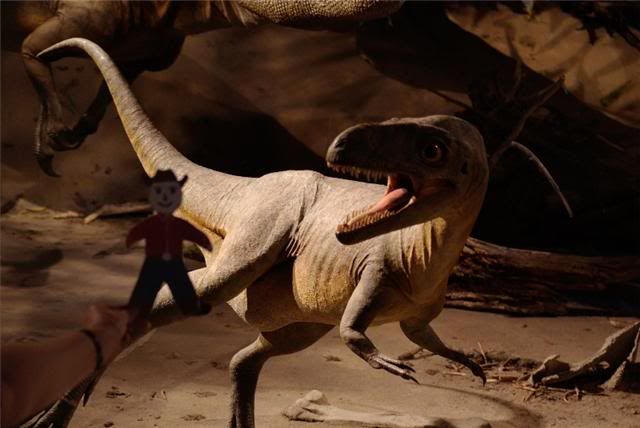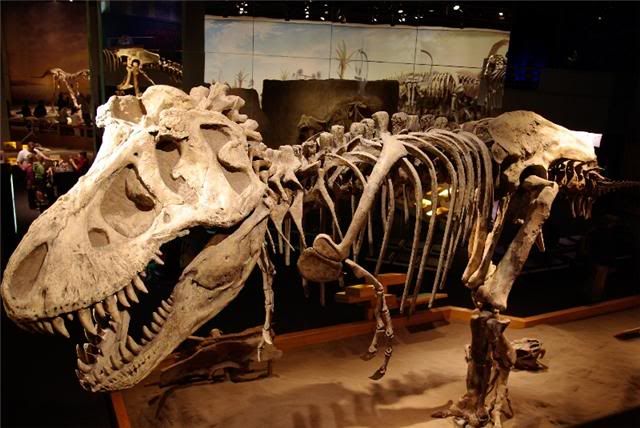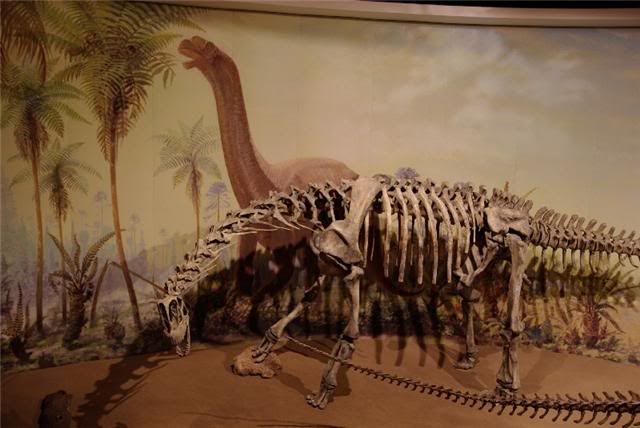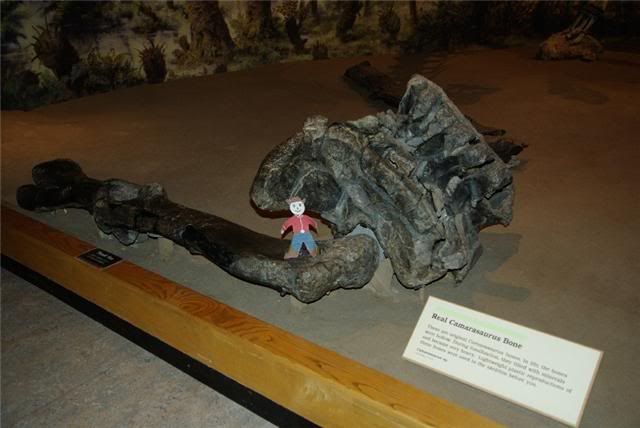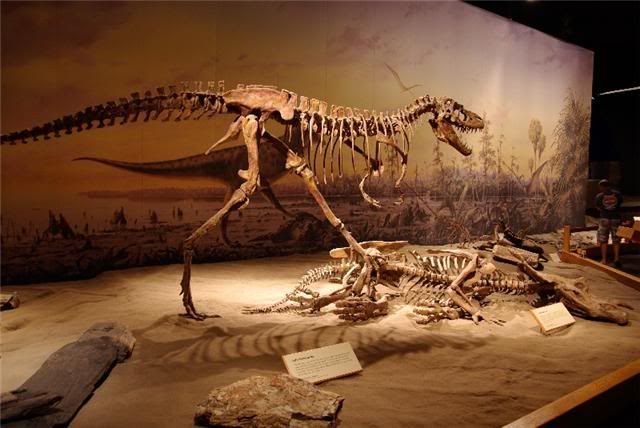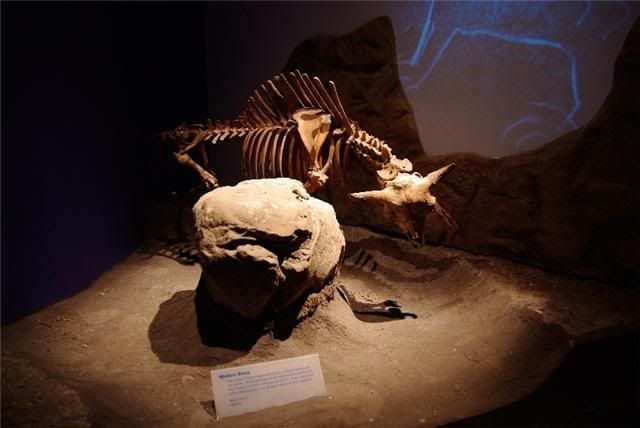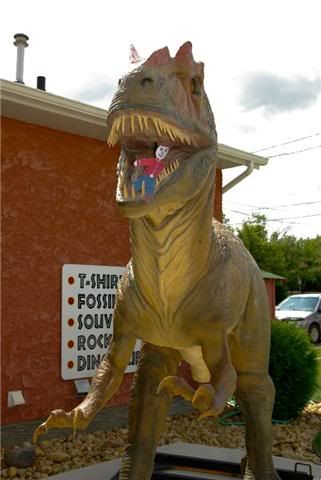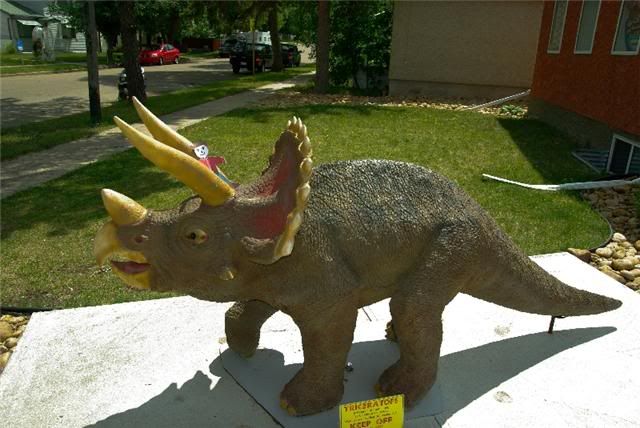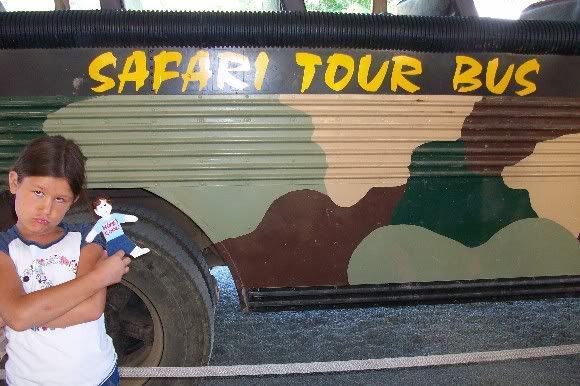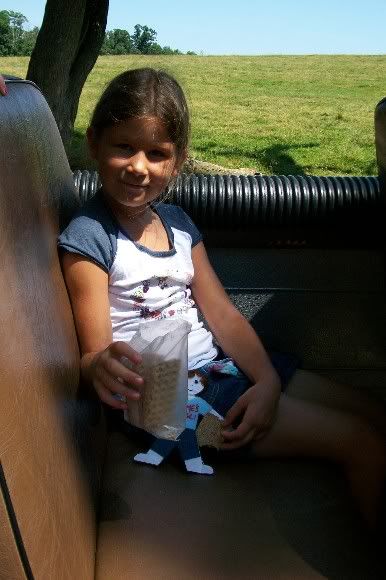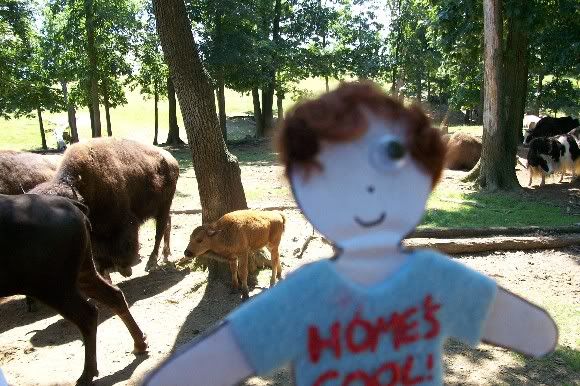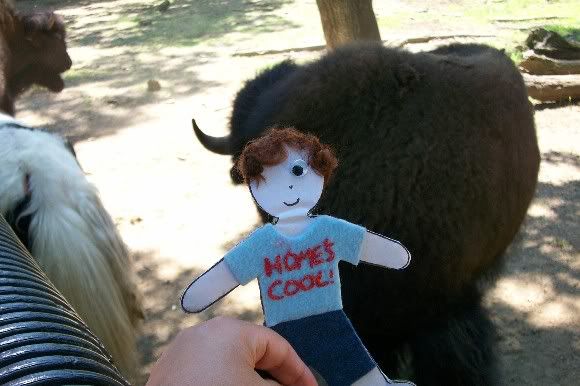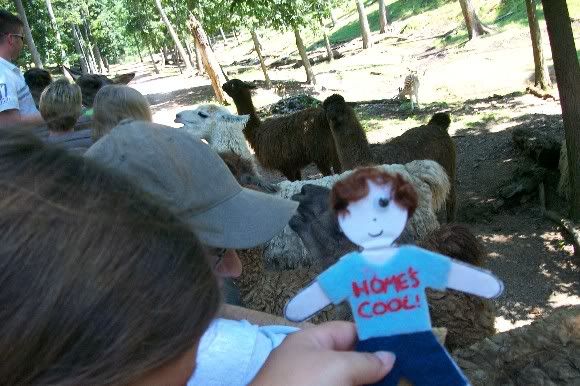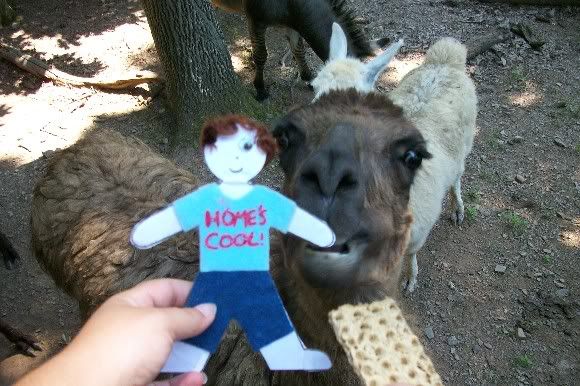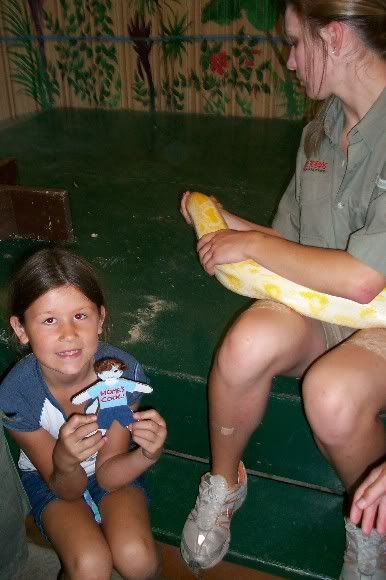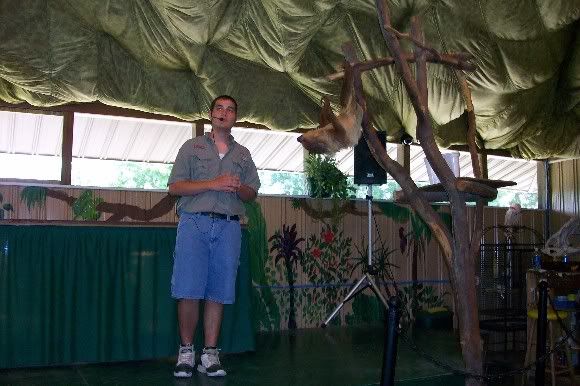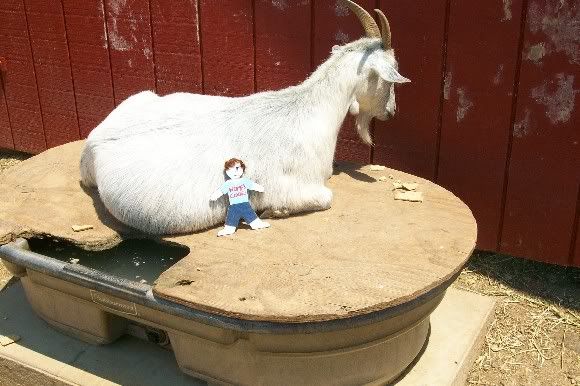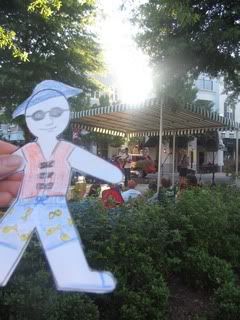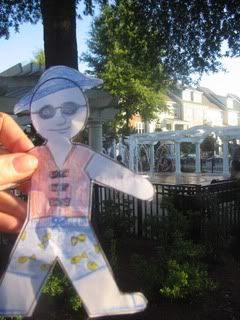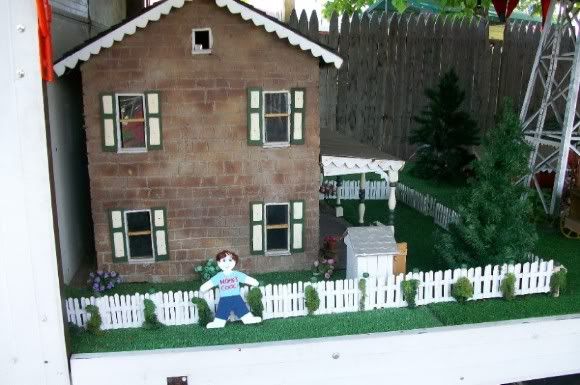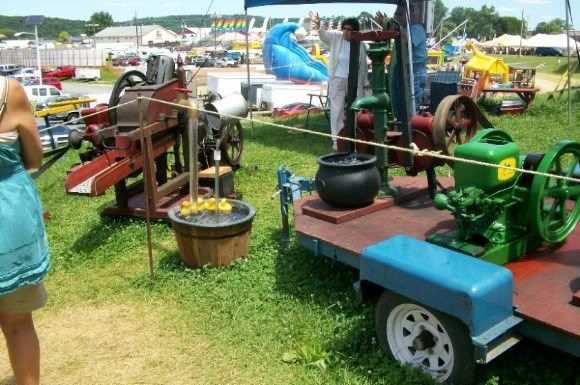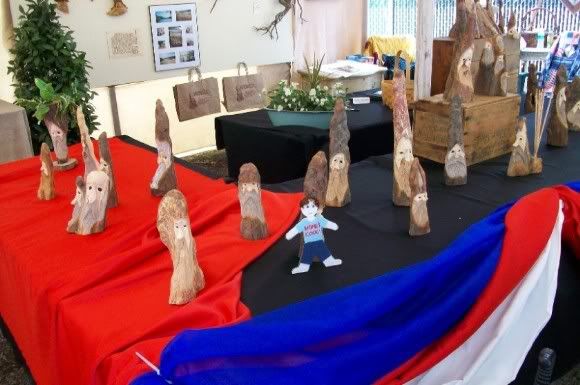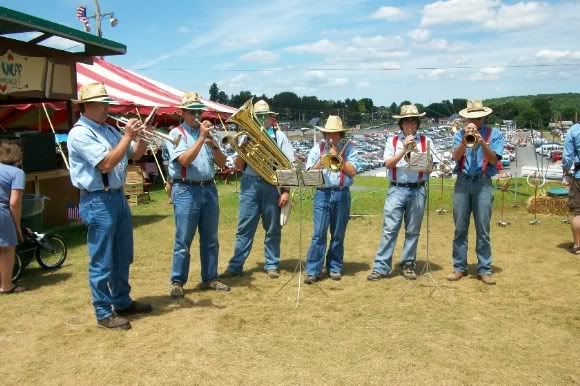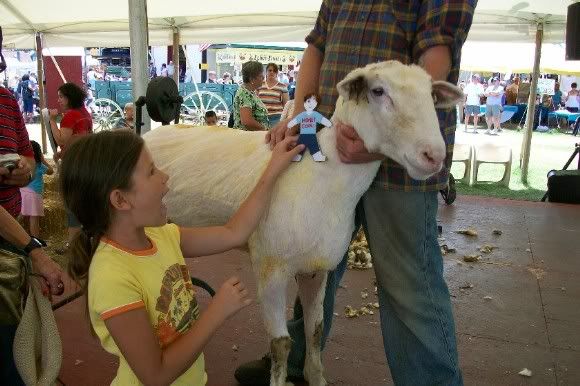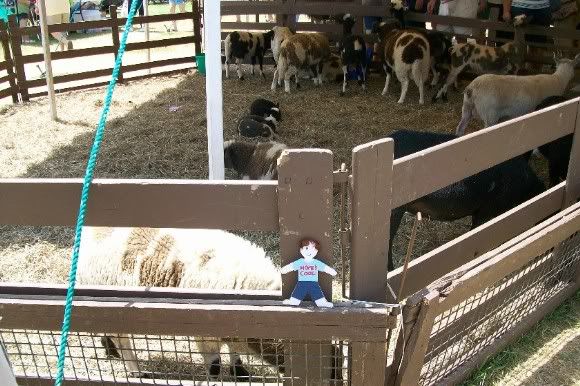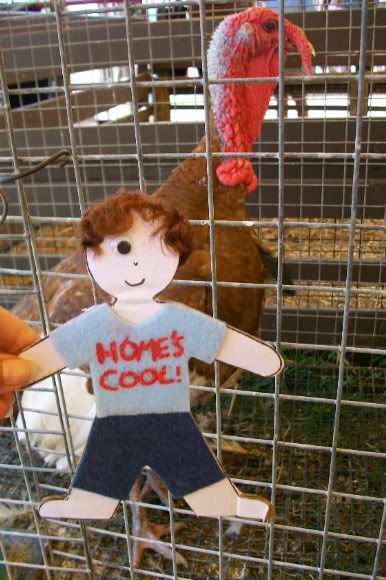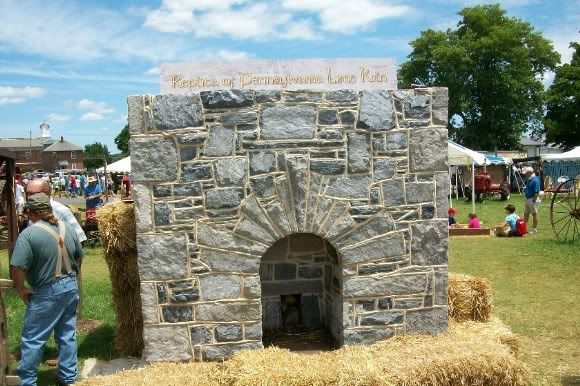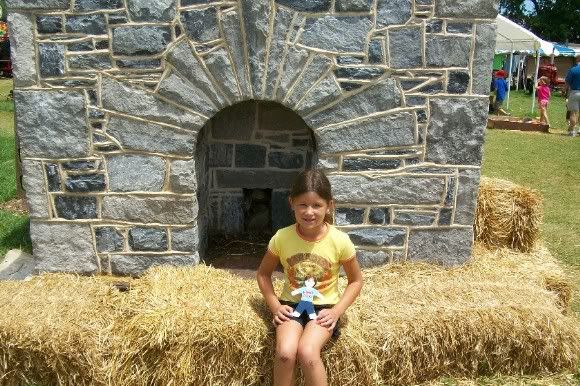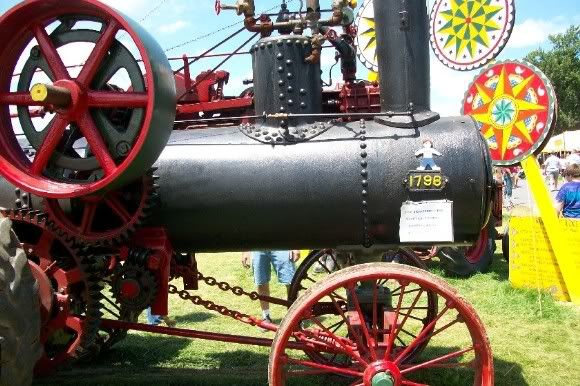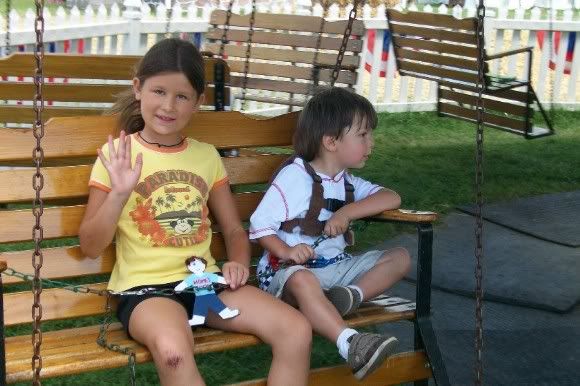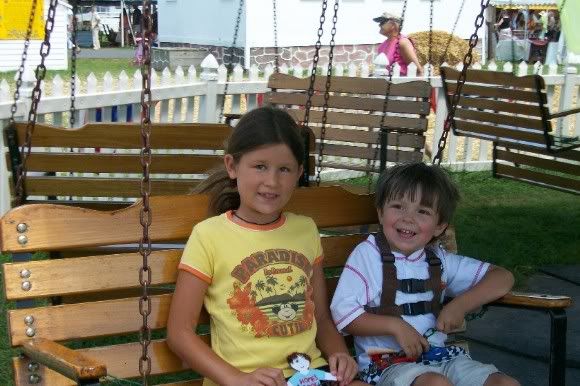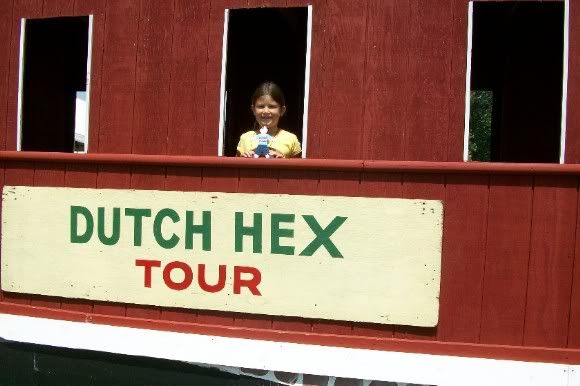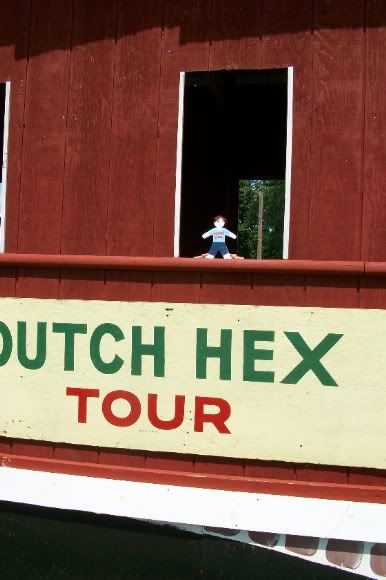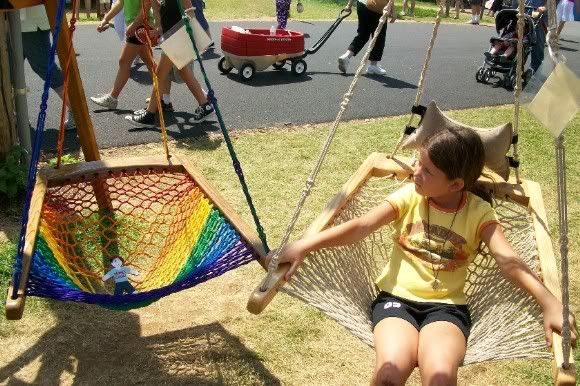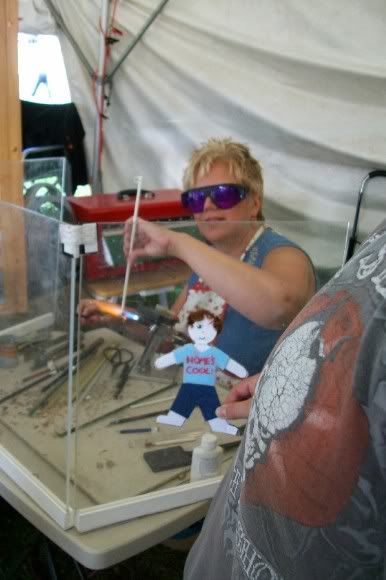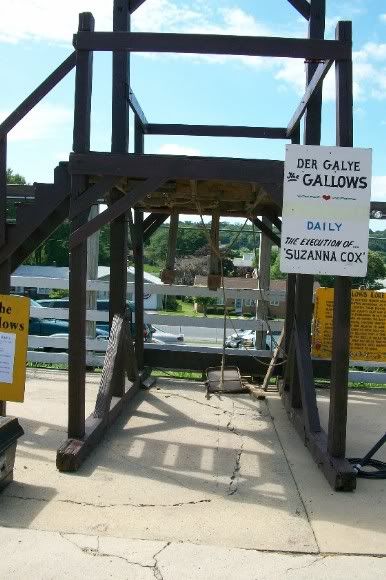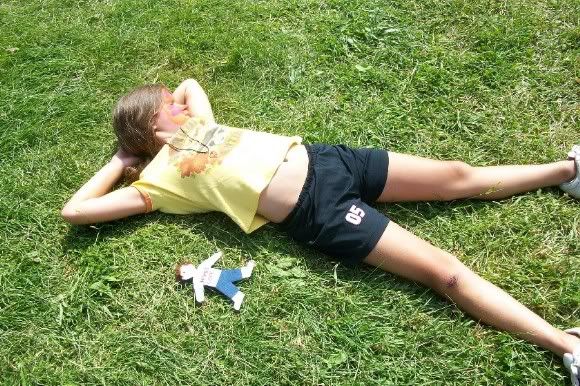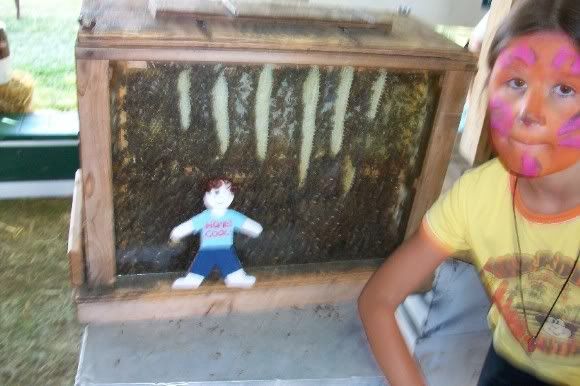"Hi Alexa.
Well, Stanley finally got out on a little excursion to the harbour in Halifax, Nova Scotia, on a day when the weather was sunny - for a change. We have been having a lot of rain this summer. so, we saw some sailing ships, and Theodore Tugboat (He had his own TV show a few years ago, but I don't know if you would have got it in the US) We also looked at some sculptures of dolphins, and one of a cow outside a famous-in-these-parts ice cream store called "Cows". And Stanley got to wear his Nova Scotia Tartan kilt, along with two guys who are running a summer business called Old City Walking Tours here in Halifax.
I am going send pictures, and will try one at a time to make sure they get through, so Stanley in his kilt should be attached to this message.
There is some information about the Nova Scotia tartan and its history here:
http://www.jennifers.ns.ca/our_tartan.htm
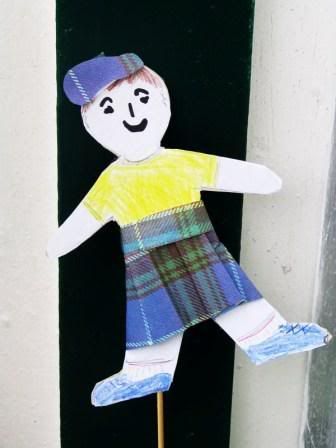
This one is Stanley in his kilt, with two guys in _their_ kilts near the Halifax waterfront.
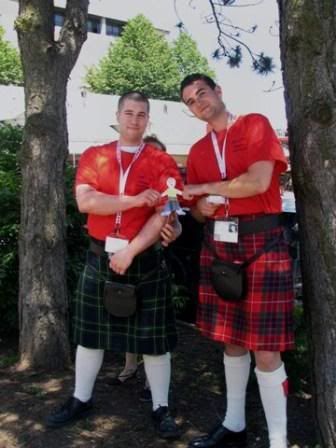
This is me (Chris) with Stanley and a sailing ship that does harbour cruises. (You may use my picture on the blog if you want. Also, I got permission from the kilted fellows at Old City Walking Tours to use their pic online as well).
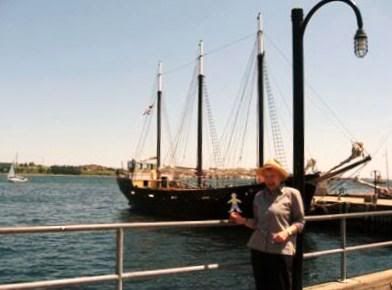
Stanley and Theodore Tugboat, who also goes on harbour tours, and had his own Tv show, too.
Here is some more info on Theodore:
http://www.murphysonthewater.com/theodoretugboat/
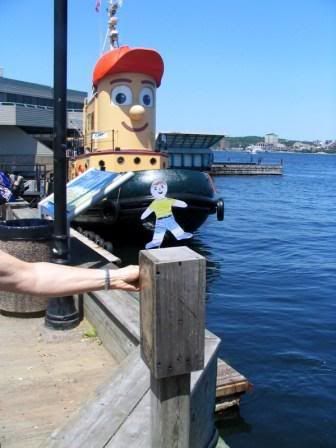
Flat Stanley with another sailboat at the waterfront. Do you recognize the Canadian flag on the stern of the boat?
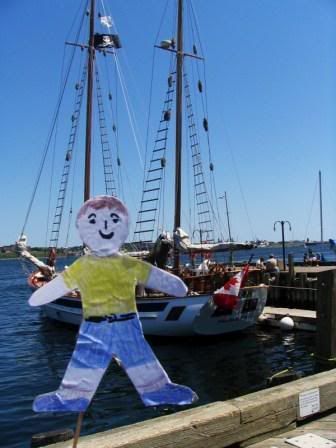
In this one, Stanley is getting acquainted with the big cow sculpture at a well-known ice cream store here called "Cows."
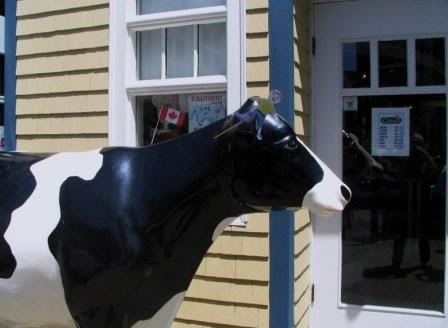
And finally, Stanley is having a ride on one of the colourful dolphin sculptures that have landed on the waterfront for the summer. You have to look carefully to see Stanley right up on the dolphin's head.
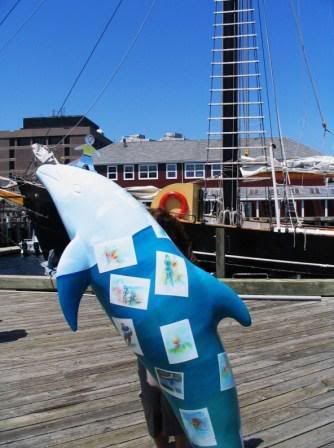
I hope all these pictures came through OK to your e-mail and didn't clog up your in box too much. I will be sending another Stanley report form Nova Scotia probably in a couple of weeks.
Cheers for now!
Chris"
Nope we have plenty of email space and love getting emails and pictures by and about Flat Stanley! Thanks for sending them, we love him in his kilt!
Yesterday we took our hometown Flat Stanley with us to Quiet Valley Living Historical Farm. Here are some excerpts from its website explaining what it is all about:
Quiet Valley Living Historical Farm is a non-profit, educational corporation dedicated to the preservation and presentation of Pennsylvania's agricultural heritage.
A living museum - like stepping back in time!
We are open to the general public... with period-dressed "family" members reenacting the life of the original Pennsylvania German family who lived on the farm from the 1760s to 1913.
Quiet Valley Living Historical Farm consists of over 100 acres of pasture, woods and fields. The farm buildings at Quiet Valley, including the barn and farm house, are listed on the National Register of Historic Places. Quiet Valley raises a variety of historically appropriate livestock and fowl that are quickly disappearing from the agricultural landscape. Traditional Pennsylvania crops such as wheat, corn and rye are grown as well.
Buildings include a farm house, spring house, cabin, school house and barn. Animals include rabbits, horses, chicken, goats, mule, cow, sheep, pigs and turkeys. Field crops include flax, wheat, corn, rye and potato.
The history of Quiet Valley Living Historical Farm begins early 1760's when the Depper family left their home in the Palatinate region of Germany to start a new life in America. They sailed from Rotterdam to Philadelphia in, arriving in 1765, and eventually made their way north looking for land that they could farm. They settled in Quiet Valley near modern Stroudsburg, Pennsylvania. In 1780 their daughter Katherine married Johann Ludwig Meyer who had originally come to America as a Hessian soldier during the Revolutionary War. Johann and Katherine passed the farm on to their son, a carpenter/farmer named John Simon Meyer. John Simon Meyer's daughter and son-in-law, Hannah and Peter Marsh received the farm next. They sold the farm to thier son Horace who lived on the farm until 1913 when the farm was sold outside the family.
In 1958 Alice and Wendell Wicks purchased the property from the widow of Thomas Hess. Attracted by the beautiful natural setting, they intended to develop it. When they began to look around the farmhouse and barn, however, they realized the historic and cultural value of what they had purchased, and were inspired to preserve it and make it available to the public.
The original portion of the farmhouse, known today as the ‘cellar kitchen’, dates from the last quarter of the 18th century. A ground-floor bedroom and a loft for the children were added soon after. The farmhouse as it stands today was completed in the 1890’s with the addition of a parlor and ‘new’ kitchen furnished with a wood burning cook-stove. Up until that time the cooking for the family had been done at the open hearth in the original cellar of the house. From the 1890’s modifications until the Wicks purchased the farm in 1958, there had been no further modernization to the property – no plumbing and no electricity. Much of the house remained as it had been in the late 1700’s and early 1800’s, along with many of the artifacts and furnishings. The barn dates from the 1850’s and is a beautiful example of a traditional, early American barn. The upper barn is made of wood with a mortise and tenon construction, and the lower level where the animals are housed is made of stone.
Alice and Wendell Wicks along with their daughter and son-in-law, Sue and Gary Oiler, restored the farmhouse and on July 13, 1963, opened to the public as Quiet Valley Farm Museum. That first year the farm was open during the summer season only. Over the years additional farm buildings were renovated and reconstructed – a ‘granddaddy’ cabin, out-door bake oven, icehouse, smokehouse, dry house and various smaller barns and sheds. Later as the farm was used more and more for educational purposes, additional storage was built and also a modern education building and a picnic pavilion. In 1994 construction was completed on a reconstructed, one-room schoolhouse circa 1893.
Since 1974 Quiet Valley Living Historical Farm has been owned and operated as a non-profit, educational corporation governed by a board of directors. Until her retirement in 2001 at the age of 85, Alice Wicks remained actively involved in the management of the museum. She had played her role as ‘Gram’ in the 1830 bedroom for over 30 years to the delight of generations of school children and summer visitors.
The farm is open to the public daily from June 20th to Labor Day every day except Monday. The tour of the farm is much more than an opportunity to see a museum. Period costumed ‘family members’ reenact life on the farm during two time periods – 1830 in the granddaddy cabin, cellar kitchen and bedroom; and 1893 in the ‘new’ kitchen and parlor. The actors strive to make their first-person interpretations as authentic as possible and they are always just as entertaining as they are educational. Family members will also show you the barn, complete with the appropriate farm animals and demonstrations of period farm equipment. Children love to try out the hay jump. A variety of 19th century crafts and skills are demonstrated daily with special demonstrations scheduled several times a week.
Here are a few pictures from Quiet Valley:
